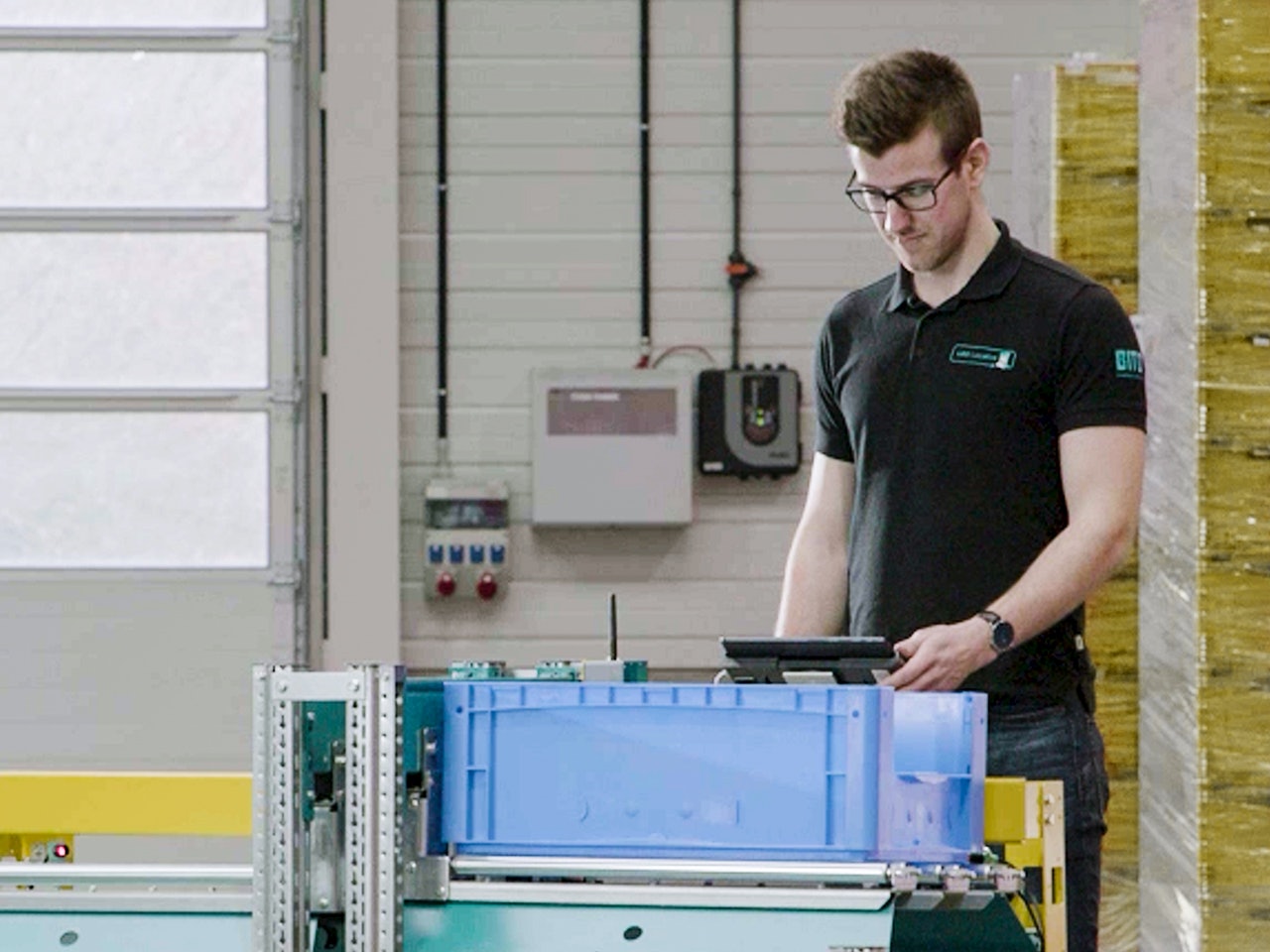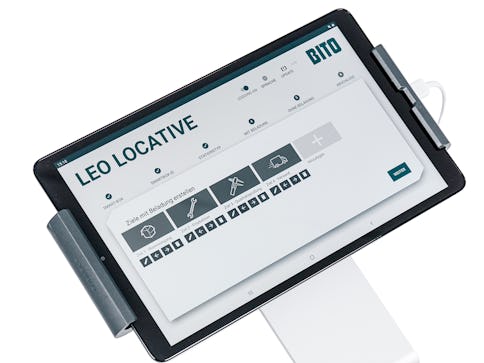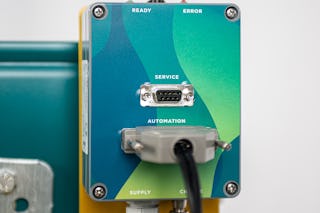How does the LEO control system work?

Control system with multi-stage structure
The LEO-AGV system is ideal for setting up a system quickly and easily, and then gradually transforming it into an autonomous solution. The control system plays a crucial role in this and has been continuously developed over the last few years.
The LEO control system is structured in several stages. This allows each customer to determine the level of complexity and investment required. Why install an expensive central controller with Wi-Fi integration if you only have a few pick-up and drop-off points?
The aim is always to automate only as much as necessary. This is the only way to quickly recoup your investment.
Control according to your needs
- Automation tailored to your needs
- You control the investment scope
- Continuous development of the control system
Find out more about the LEO control system
How do I operate the LEO system?

Three different operating options
- Tablet: Simple user interface allows LEO to issue target commands
- Barcode: Allows complex configurations
- Push buttons: 6-way industrial pushbuttons enable command transmission in harsh environments
Interfaces to customer systems
- The LEO system can also be optionally connected to customer software: warehouse management software, machine control, ERP systems can be integrated via a defined interface.

The LEO locative app can be used to navigate to different destinations or a series of destinations. The app is optimised for use with transfer stations and buffer lanes. You can navigate to both loaded and unloaded destinations.

This requires the containers to be barcoded. These are read by a barcode scanner at the station and automatically sent to the appropriate destination.

The keypad is recommended for harsh applications, e.g. where gloves must be worn by the operator. Each key on the keypad corresponds to a LEO target.
Book an appointment!
Use our online booking calendar to arrange an appointment with our BITO LEO experts.
Why use a decentralised control system?
Decentralised control offers many advantages
SIMPLICITY
Decentralised controllers are much easier to install and operate than centralised controllers. Less infrastructure is required and there is no need to interface with a customer's network.
In addition, errors are easier to detect and correct.
COST REDUCTION
The Smart Box does not require a Wi-Fi infrastructure. This eliminates the need to install or extend the existing network. AGV systems place very high demands on the WiFi- infrastructure. The existing Wi-Fi must always be extended in order to work.
UNSKILLED INSTALLATION
Systems with control systems always have to be installed by the supplier's specialist personnel. This results in high additional costs.
SHORT PROJECT TIMES
Simple systems are quick to install. The fewer interfaces required, the shorter the implementation time and the shorter the project duration.
THE SYSTEM GROWS WITH YOU / SCALABILITY
The system can easily grow with you. The LEO system can be started without control and expanded step by step. The initial investment and therefore the project risk is low!


